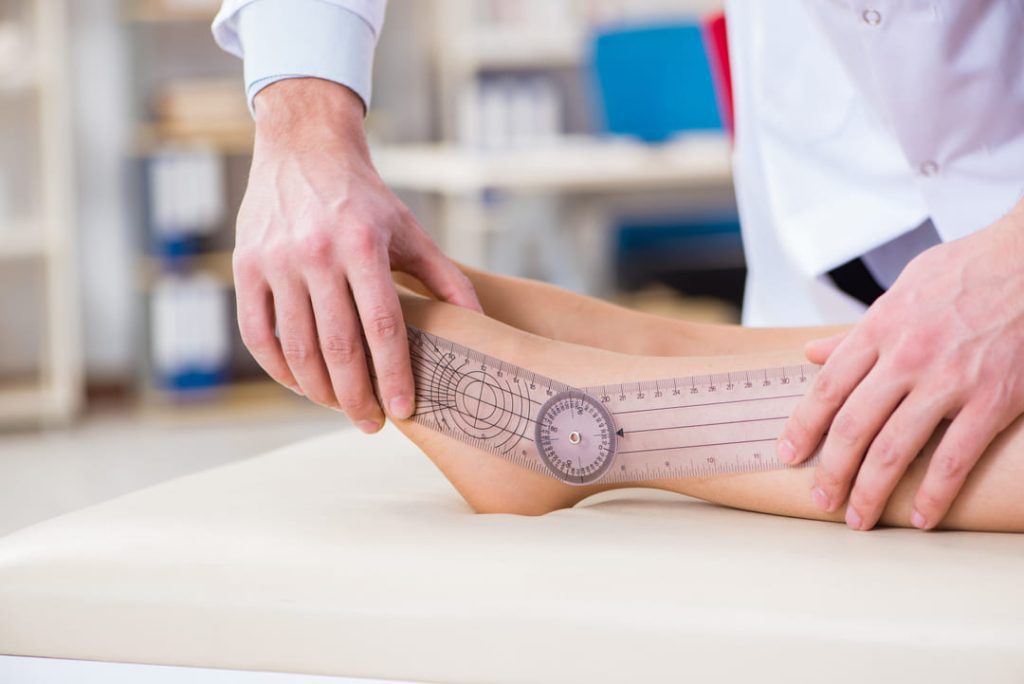Looking for Expert-Level VA Claim Answers?📱Call Us Now! 737-295-2226
Hey, fellow Veteran, do you have tendonitis from your time in service? If so, you may be eligible for VA disability compensation and benefits!
Tendonitis is a painful and often debilitating condition, especially common in veterans due to the intense physical demands of our military life. Overloaded joints, repetitive movements, and service-related injuries can all contribute to inflamed tendons that limit your mobility and cause chronic pain.
Getting a tendonitis VA rating is the key to unlocking monthly compensation and other benefits. But to qualify, you need to understand how the VA evaluates tendonitis, what evidence to submit, and how to link your condition to service.
In this guide, I’ll walk you through everything you need to know about tendonitis VA ratings and claims—so you can get all benefits YOU DESERVE.
Table of Contents
Summary of Key Points
- Tendonitis is a common service-connected disability among veterans due to repetitive stress or injury during military service.
- The VA rates tendonitis based on the limitation of motion in affected joints, such as the elbow, shoulder, knee, ankle, or wrist.
- You can qualify for VA disability compensation by proving service connection.
- A successful claim requires strong evidence, including medical records, a clear nexus, and active participation in your C&P exam.
What is Tendonitis?

Tendonitis is a condition that causes pain when the tendons in your joints become inflamed. This pain can reduce your range of motion and cause pain when you attempt to move it.
Typically, tendonitis in veterans is caused by repetitive movements or an injury stemming from manual labor performed while on active duty.
According to the Mayo Clinic, you can experience tendonitis in any tendon, but it’s most common around the shoulders, elbows, wrists, knees, and heels.
Orthopedic conditions can significantly impact your life, so it’s essential to determine your tendonitis VA rating.
Common Signs and Symptoms of Tendonitis
- Sudden and severe pain at the site of the tendon that becomes worse when weight-bearing
- Limited motion in the joint
- A gradual buildup of pain at the site of the tendon
- Loss of range of motion in the shoulder (aka frozen shoulder)
- Swelling or stiffness of the joint
- Pain around the soft tissue or tendon
- A grating or crackling noise when moving the damaged tendon
Treatment
There are several treatment methods for tendonitis, depending on your condition. Your doctor can determine the best treatment for your situation. Some common tendonitis treatments include:
- Braces
- Physical therapy
- Dry needling
- Surgery
- Injections
- Ultrasonic tenotomy
Can I Get VA Compensation for Tendonitis?
Yes! You can receive VA disability for tendonitis if you meet the specific criteria detailed below.
To receive a tendonitis VA rating, you must qualify for one of the following:
Direction Service Connection
- Have a current diagnosis of tendonitis, AND
- Show evidence of an in-service event, injury, or illness, AND
- Provide a medical nexus linking the current, diagnosed tendonitis to the in-service event, injury, or illness
Secondary Service Connection
If you have a primary-service connection and can prove it caused or worsened your tendonitis, you may qualify for a secondary-service connection. To determine this, you would need to:
- Have a current diagnosis of tendonitis, AND
- Have evidence of a service connection for your primary disability, AND
- Have evidence of a link (nexus) between the primary service-connected disability and the current disability
You may be eligible for a VA disability rating for tendonitis (as a secondary condition) if your tendonitis is caused by another service-connected disability, including:
- Diabetes
- Rheumatoid Arthritis
- Bone pain
Types of Tendonitis
You’ve likely heard of “tennis elbow,” a form of tendonitis, but other types can also make your life difficult. Knowing where your pain stems from can assist you when seeking a tendonitis VA rating.
5 Common Types of Tendonitis
- Elbow Tendonitis – This condition, also called Tennis Elbow, occurs when the tendons in your elbow are overworked. You may experience pain when turning doorknobs, gripping objects, shaking hands, or holding a cup of tea.
- Shoulder Tendonitis – You experience shoulder tendonitis when there is an inflammation of the rotator cuff and biceps tendon.
- Patellar Tendonitis – This condition occurs when there is an injury to the tendon connecting your kneecap to your shinbone and is often found in activities that involve frequent jumping.
- Achilles Tendonitis – You may experience Achilles tendonitis from overuse of your Achilles tendon, which connects your calf muscles at the back of your lower leg to your heel bone. This condition is commonly found in runners, especially those who recently increased their intensity.
- Wrist Tendonitis – This condition occurs when there is an inflammation in the tendons that connect the muscles in your forearm to the bones in your hand. You are at risk for wrist tendonitis if you put a lot of stress on your wrist.
Elbow Tendonitis VA Ratings
Elbow tendonitis is rated by the VA at 0%, 10%, 20%, 30%, 40%, or 50%. Elbow tendonitis is rated analogously based on the limitation of motion of the affected parts.
Elbow Tendonitis VA Rating Chart
| Diagnostic Code 5206-Forearm, Limitation of Flexion | VA Rating (Dominant Arm) | VA Rating (Non-Dominant Arm) |
| Flexion limited to 45 degrees | 50% | 40% |
| Flexion limited to 55 degrees | 40% | 30% |
| Flexion limited to 70 degrees | 30% | 20% |
| Flexion limited to 90 degrees | 20% | 20% |
| Flexion limited to 100 degrees | 10% | 10% |
| Flexion limited to 110 degrees | 0% | 0% |
| Diagnostic Code 5207-Forearm, Limitation of Extension | VA Rating (Dominant Arm) | VA Rating(Non-Dominant Arm) |
| Extension limited to 110 degrees | 50% | 40% |
| Extension limited to 100 degrees | 40% | 30% |
| Extension limited to 90 degrees | 30% | 20% |
| Extension limited to 75 degrees | 20% | 20% |
| Extension limited to 60 degrees | 10% | 10% |
| Extension limited to 45 degrees | 10% | 10% |

Shoulder Tendonitis VA Ratings
The shoulder tendonitis disability VA rating is 20%, 30%, 40%, or 50%.
Note: The scapula and humerus move as one piece.
| Diagnostic Code 5200-Scapulohumeral articulation, ankylosis of: | VA Rating(Major) | VA Rating(Minor) |
| Unfavorable, abduction limited to 25° from side | 50% | 40% |
| Intermediate between favorable and unfavorable | 40% | 30% |
| Favorable, abduction to 60°, can reach mouth and head | 30% | 20% |
Patellar Tendonitis VA Ratings
The VA rates patellar tendonitis based on the limitation of flexion and extension in your knee using Diagnostic Codes (DC) 5260 and 5261. Patellar tendonitis is rated by the VA at 0%, 10%, 20%, 30%, 40%, or 50%.
Limitation of Flexion of the Knee (DC 5260)
Limitation of flexion of the knee refers to the range of motion you have when bending your knee towards your body.
Frequently, the VA assigns a 10% rating for limitation of flexion of the knee; however, the highest you can receive is 30%. When determining your rating, the VA notes signs of functional loss like interference with standing and sitting and weakness.
Limitation of Extension of the Knee (DC 5261)
If your knee can’t straighten all the way, the VA will rate you based on the limitation of extension of the knee. At this point, your knee isn’t frozen, but you don’t have full extension.
The disability ratings for DC 5261 vary from 0% to 50%. The more difficult it is to straighten your knee, the greater your disability rating likely will be.
Achilles Tendonitis VA Ratings
Your Achilles tendonitis VA rating is based on the severity of your condition and is assigned under Diagnostic Codes 5270 and 5271. Achilles tendonitis and ankle tendonitis receive the same rating from the VA and can be rated 10%, 20%, 30%, or 40%.
Under DC 5270, the VA disability for ankle tendonitis is rated according to ankylosis of the ankle (e.g., abnormal stiffening and immobility), as seen below:
- 40% – Plantar flexion at more than 40 degrees, or in dorsiflexion at more than 10 degrees, or with abduction, adduction, inversion, or eversion deformity
- 30% – Plantar flexion, between 30 and 40 degrees, or in dorsiflexion, between 0 and 10 degrees
- 20% – Plantar flexion, less than 30 degrees
However, if you are rated under DC 5271 for the limited range of motion, the rating criteria are:
- 20% – Marked limitation of motion of the ankle (less than 5 degrees dorsiflexion or less than 10 degrees plantar flexion)
- 10% – Moderate limitation of motion of the ankle (less than 15 degrees dorsiflexion or less than 30 degrees plantar flexion)
If your limitation of motion show doesn’t meet the criteria for a compensable rating, a 10% rating may be assigned for each group of minor joints affected by limitation of motion under Diagnostic Code 5003.
Submitting a VA Claim for Tendonitis
If you believe you deserve VA disability for tendonitis, the first step is to submit a claim. Remember to keep all documentation of your medical condition, which could benefit you in receiving a higher disability.
How to WIN Your VA Claim FASTER! (3-Step Process)
3 Steps to Submitting a VA Claim
- Gather your evidence and submit your intent to file
- Submit your claim
- Await a decision (expect an exam from the VA)
C&P Exam for Tendonitis
When working towards a tendonitis VA rating, you may be required to attend a compensation & pension (C&P) exam. The VA will contact you for a C&P exam if necessary.
During your exam, you aren’t being treated for your condition; the medical professional will review your information to determine whether it is connected to your time in the service.
A C&P exam is vital to your claim because it lets the VA know how limiting your condition is and its impact on your daily life.

Range of Motion Testing for Tendonitis
The VA uses range-of-motion testing when determining your tendonitis VA disability rating. The various types of motion include:
- Flexion = How far you can bend a joint
- Extension = How far you can extend a joint
- Lateral flexion = How far you can bend your joint sideways
- Rotation = How far you can rotate your joints
Doctors use a goniometer to measure the range of motion and help determine the severity of your limitations.
Top 10 C&P Exam Quick Prep Tips
Top 10 C&P Exam Quick Prep Tips in Just 10 Minutes (The Insider’s Guide)!
Con
Is VA Claims Insider Worth It?
- VA Claims Insider is the #1 most trusted name in VA disability claims.
- Work directly with a VA claims coach who can educate you to VA claim victory.
- 25,000+ disabled veterans have served in our membership programs since 2016.
- 30% average rating increase for veterans who complete our #1-rated Elite program.
- 4.7/5.0 average rating out of 5,500+ total reviews; over 4,500 5-star reviews.
FAQs | Frequently Asked Questions
Can you get VA disability for tendonitis in both knees or elbows?
Yes. If both joints are affected, you may receive separate ratings for each limb, depending on the severity and how the VA evaluates range of motion in each case.
How do I increase my VA rating for tendonitis?
You’ll need to show that your condition has worsened since your last evaluation. This could include more limited range of motion, worsening pain, or additional affected joints. A new C&P exam or updated medical evidence (e.g., DBQ) can help support your claim for an increased rating.
Is tendonitis a permanent VA disability?
Not necessarily. The VA may assign a temporary or permanent rating depending on how long your symptoms are expected to last. If your tendonitis improves with treatment, the VA could re-evaluate your rating.
Is a nexus letter required for tendonitis?
No, a nexus letter isn’t required. However, a strong nexus letter from a qualified medical professional can greatly improve your chances of approval.
Does the VA consider pain when rating tendonitis?
es. Even if your range of motion doesn’t qualify for a higher rating, documented functional loss due to pain, weakness, or instability may still result in a compensable VA rating under 38 CFR § 4.59.
Author

Brian Reese
Brian Reese is a world-renowned VA disability benefits expert and the #1 bestselling author of VA Claim Secrets and You Deserve It. Motivated by his own frustration with the VA claim process, Brian founded VA Claims Insider to help disabled veterans secure their VA disability compensation faster, regardless of their past struggles with the VA. Since 2013, he has positively impacted the lives of over 10 million military, veterans, and their families.
A former active-duty Air Force officer, Brian has extensive experience leading diverse teams in challenging international environments, including a combat tour in Afghanistan in 2011 supporting Operation ENDURING FREEDOM.
Brian is a Distinguished Graduate of Management from the United States Air Force Academy and earned his MBA from Oklahoma State University’s Spears School of Business, where he was a National Honor Scholar, ranking in the top 1% of his class.



